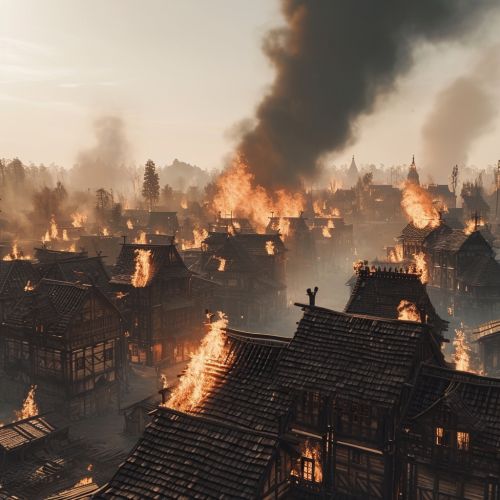Great Fire of London
Origins and Causes
The Great Fire of London was a catastrophic event that occurred in the city of London, England, from Sunday, 2 September to Thursday, 6 September 1666. The fire began in a bakery on Pudding Lane and rapidly spread throughout the city, consuming much of the urban area within the old Roman city wall. The fire was fueled by a combination of dry weather, strong winds, and the largely wooden construction of the city's buildings.


Impact and Aftermath
The Great Fire of London had a profound impact on the city and its inhabitants. It destroyed 87 churches, 13,200 houses, and numerous other buildings, leaving approximately 70,000 of the city's 80,000 inhabitants homeless. The fire also caused significant economic damage, with the cost of rebuilding estimated to be £10 million (equivalent to £1.5 billion in 2020). Despite the scale of the disaster, the death toll was remarkably low, with only six verified deaths.
In the aftermath of the fire, the city underwent significant changes. The old, wooden buildings were replaced with brick and stone structures, and the city's layout was altered to improve fire safety. The fire also led to the establishment of the first fire insurance company and the creation of the London Fire Brigade.
Legacy
The Great Fire of London is remembered as one of the most significant events in the city's history. It is commemorated with the Monument to the Great Fire of London, a 202-foot tall column located near the site where the fire began. The fire also influenced the development of modern fire safety regulations and the design of urban environments.
